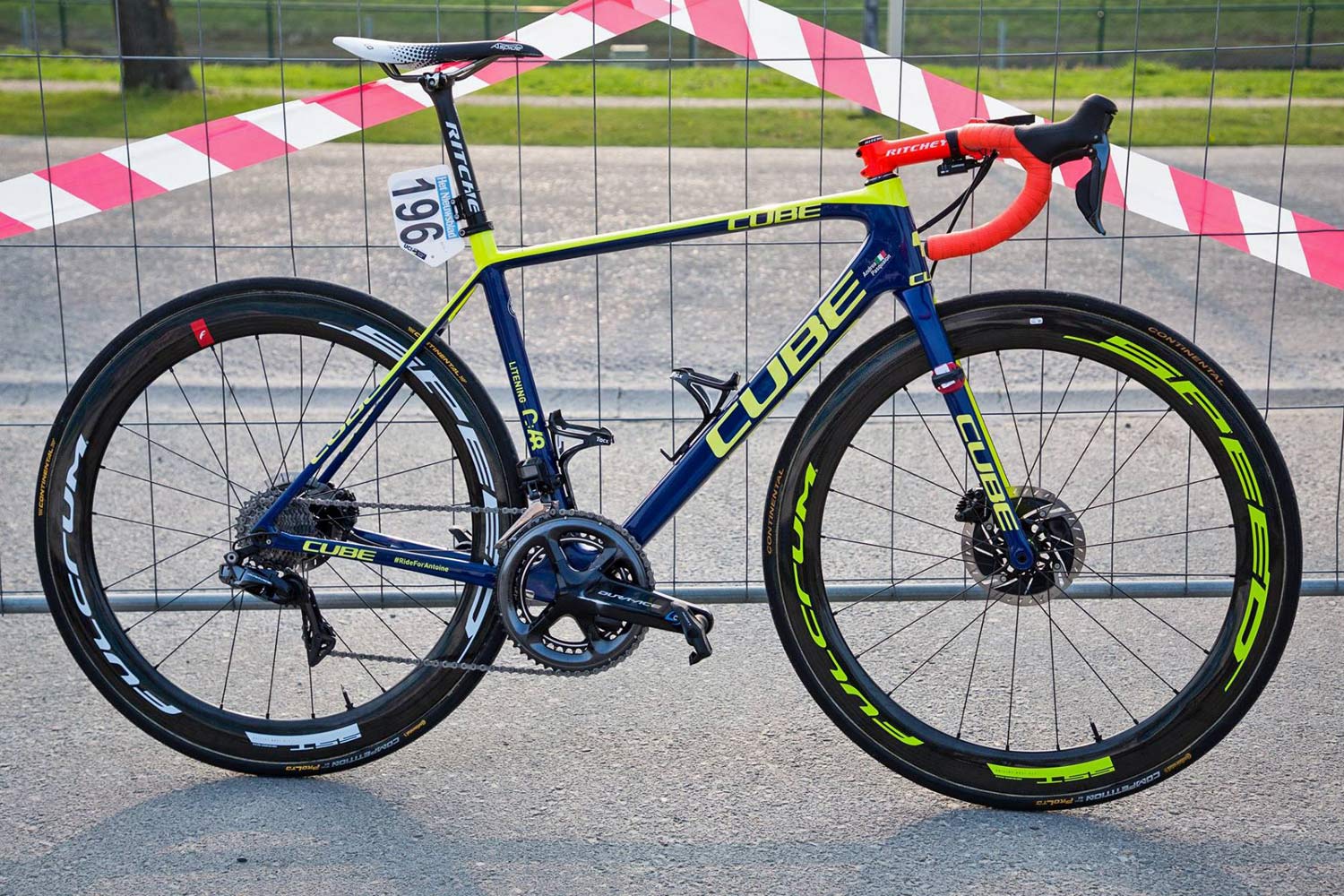For several years we’ve heard of their lower rolling resistance, and experienced firsthand the improved comfort & grip of larger road tires. But pro roadies have been resistant to change. That time for change seems to have come, as 28mm tubulars become de rigueur in the peloton of the World Tour. And lest we forget the controversies of just a few years ago… rim brake tracks look to be disappearing as well.
“The rise of the 28 tubular”: wider tires are faster!
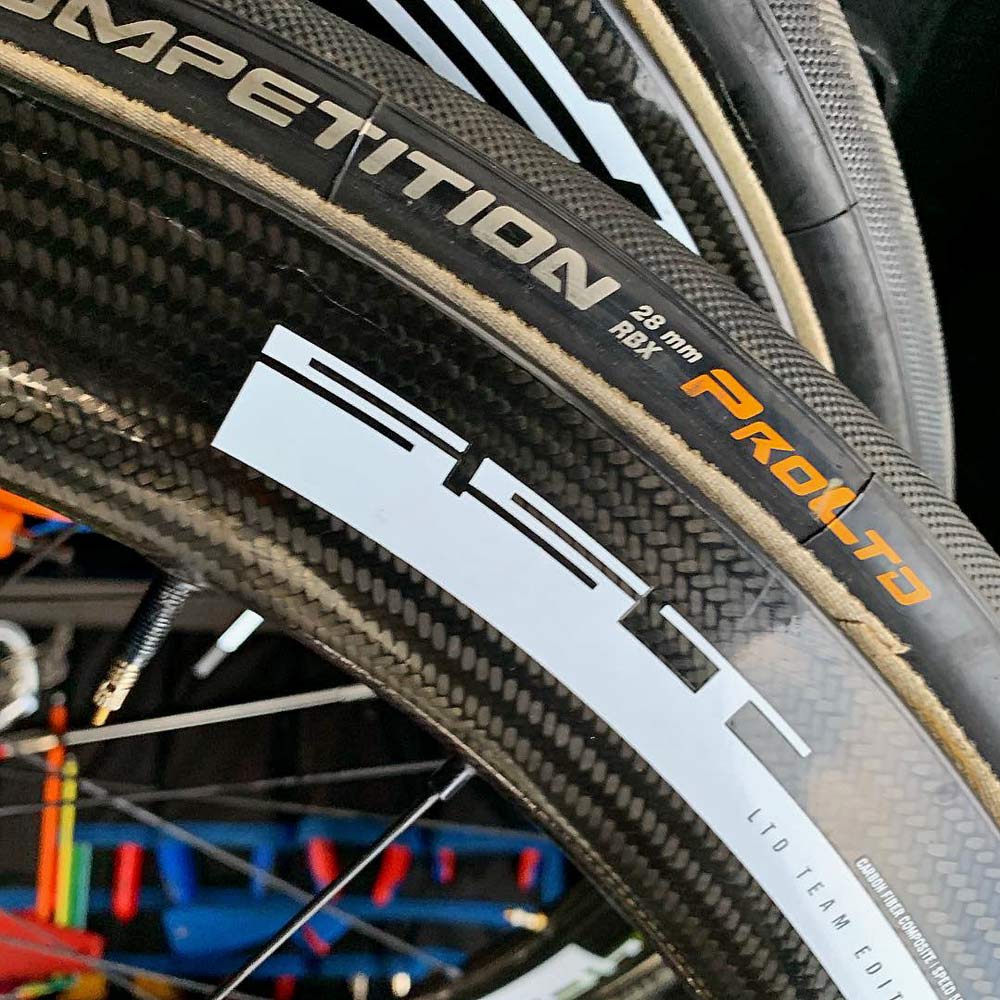
With the Spring Classics underway, Mikey van Kruiningen head mechanic for the Team Wanty-Gobert has given us a unique glimpse at what goes on Behind the Peloton. What do we see?
Mikey calls it “The rise of the 28 tubular”. And it’s certainly not limited to the 28mm Continental Competition Pro Ltd tubulars glued to his own team’s Fulcrum Speed 55T DB wheels on Cube Litening C:68 bikes…
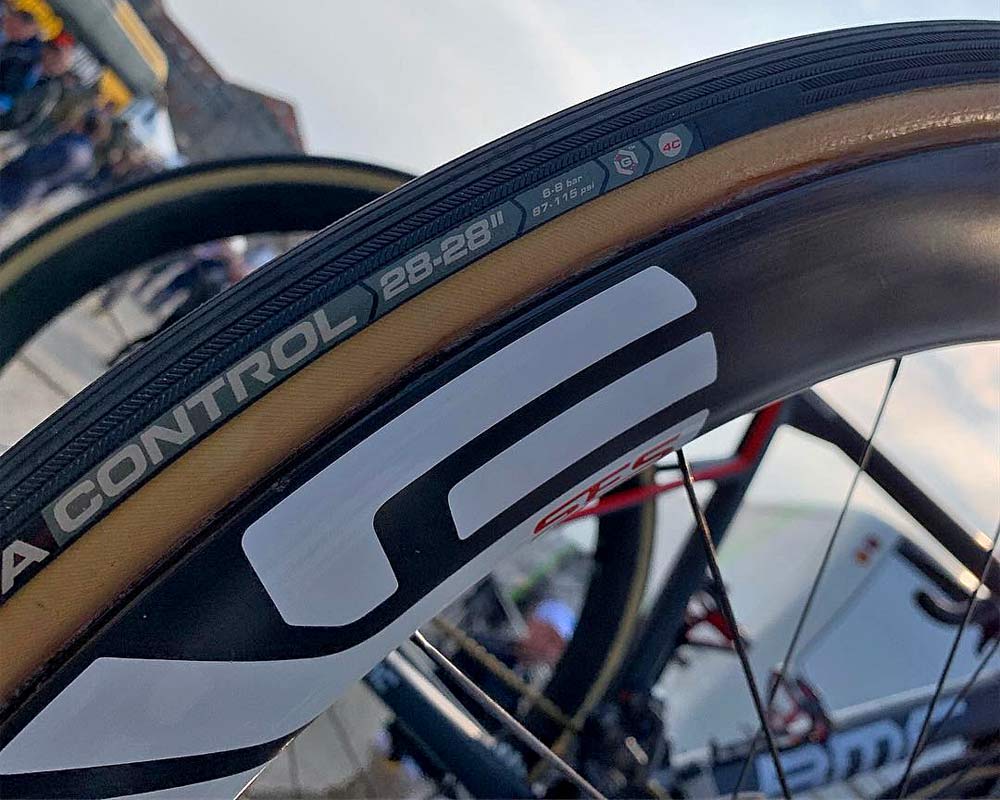
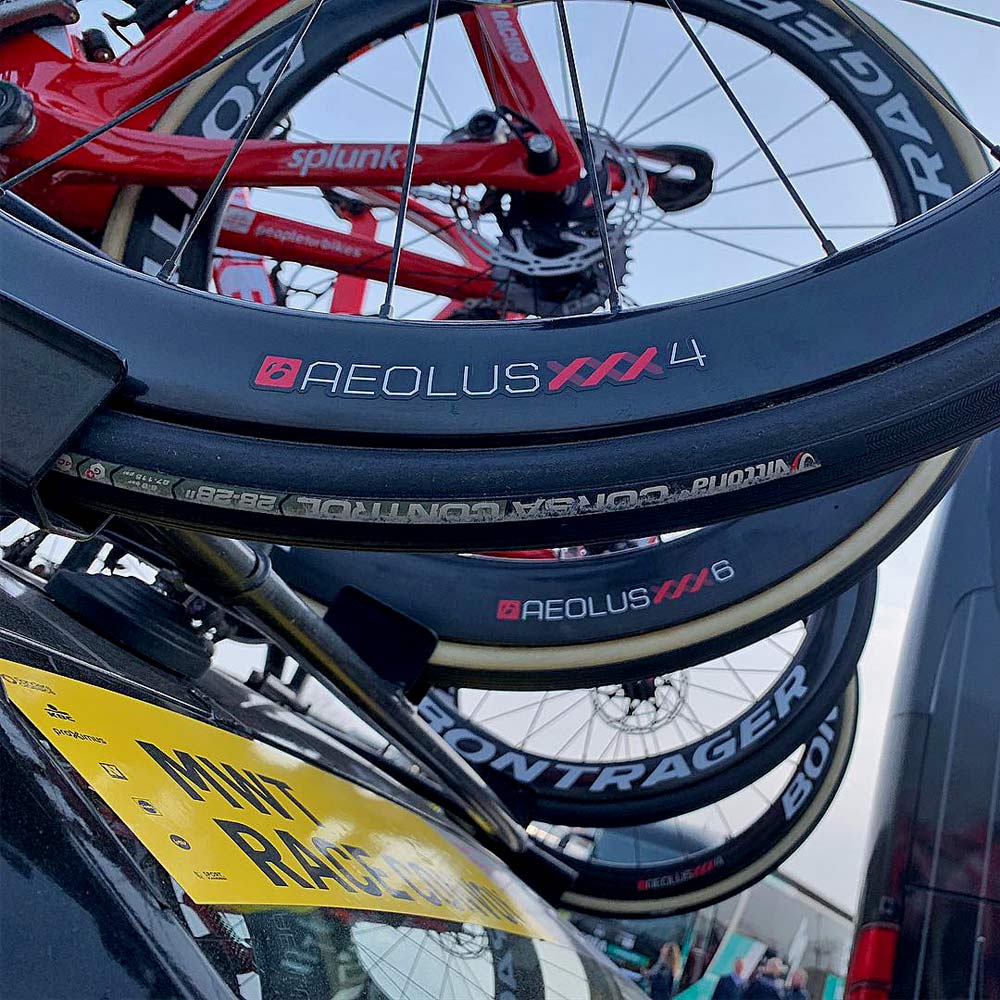
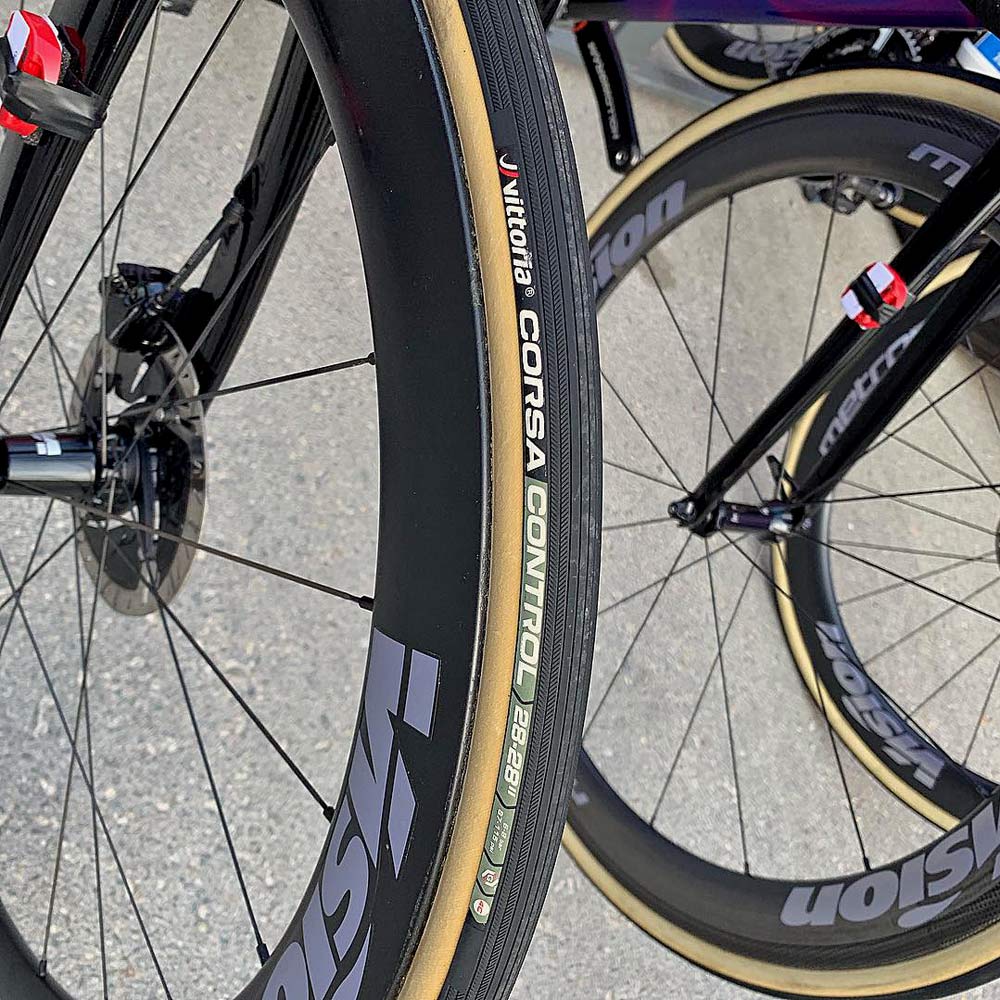
With more wide carbon wheels being raced at the top level of road cycling now, there is less of an aerodynamic penalty for stepping up to wider tires. So pro riders are finally taking advantage of what lab tests have shown to reduce rolling resistance, decrease rider fatigue, improving comfort, grip & control. And Gent-Wevelgem doesn’t even feature the harshest cobbles that will come into play over the next couple of weeks of racing. (It only has about 2km of proper cobbled climbing out of the 250km course.)
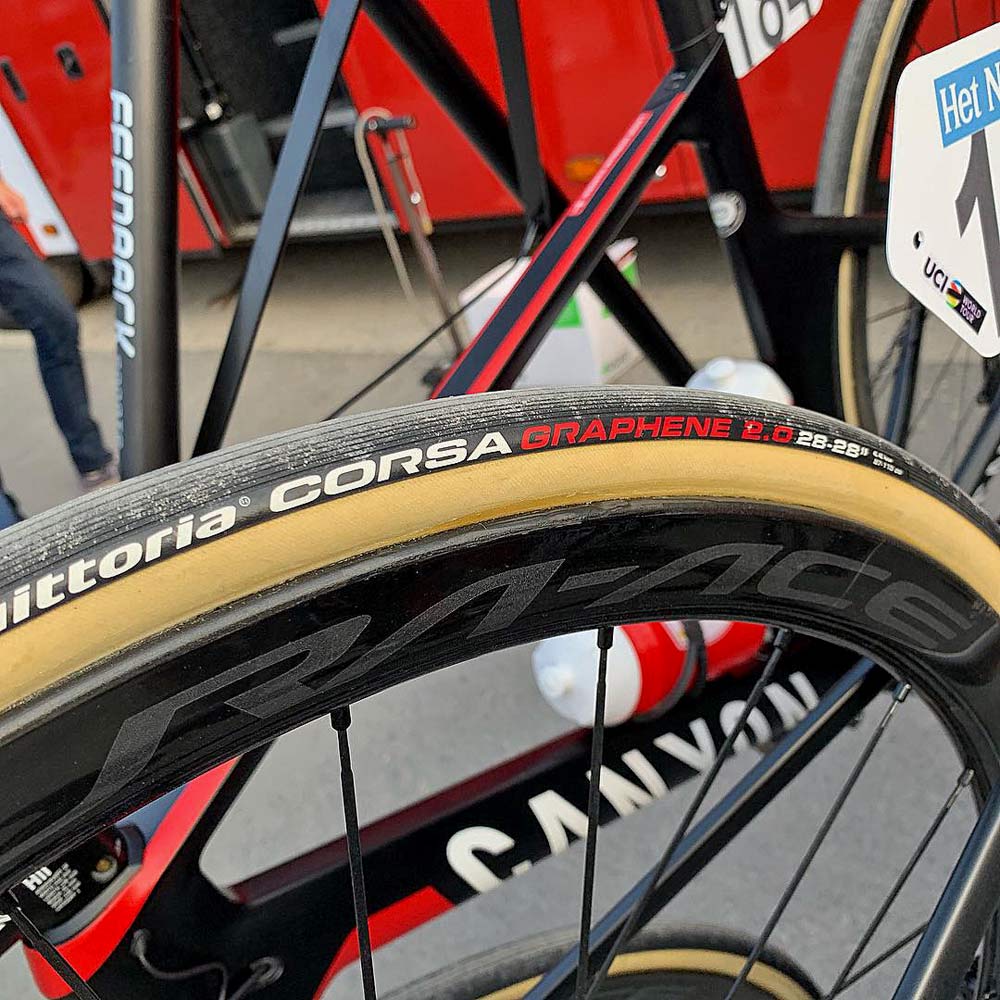
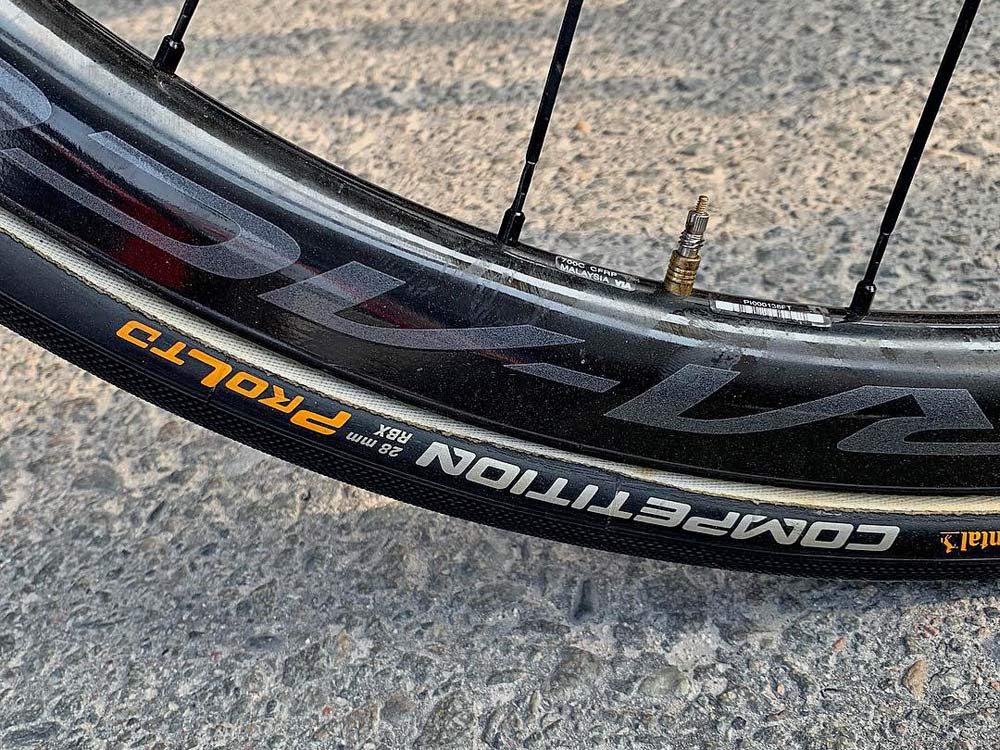

We also notice that out of the photos of wheels from seven different teams that Mikey sent, only one has a brake track. And even those are on a spare bike where you can see in the background the team’s A-bikes have rotors. Clearly disc brakes are no longer an oddity in pro racing either.
